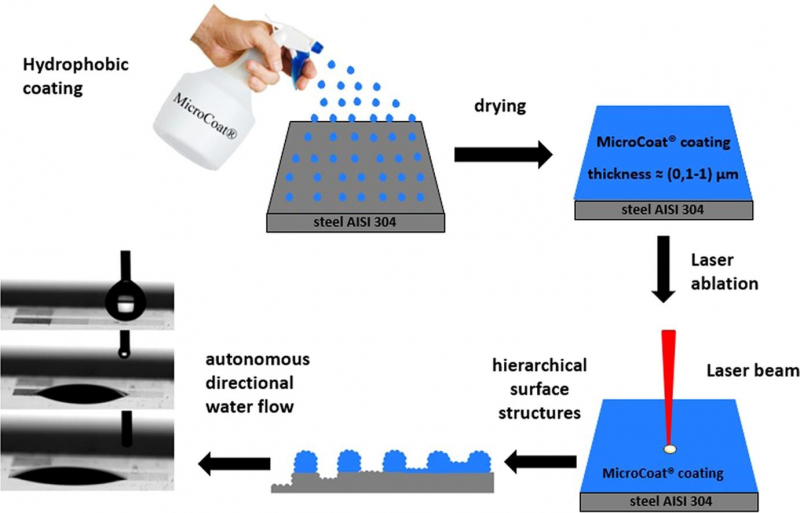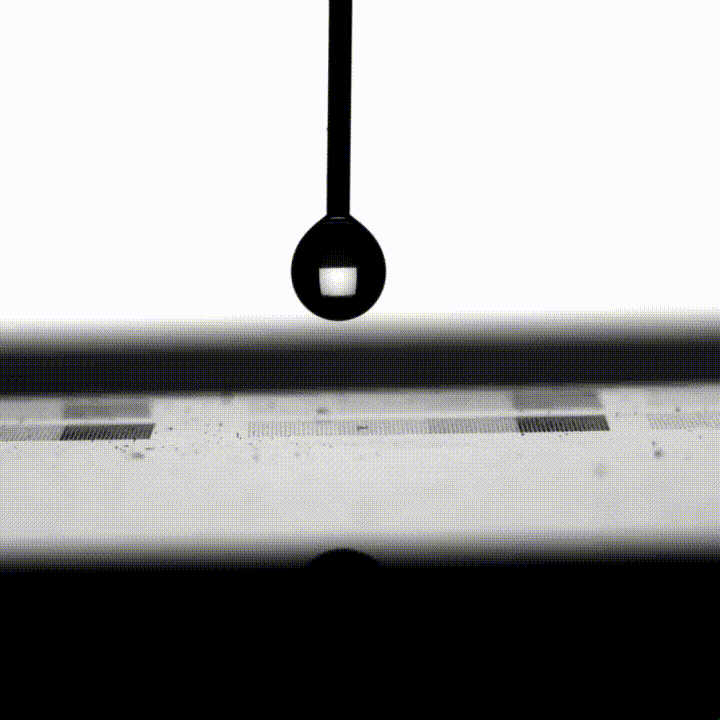Devices that utilize microfluidic modules are increasingly used to study the chemical composition of air, water, oil, and biological liquids. They are especially promising for medicine, where they can be used as express tests and biosensors for diagnostics and blood testing.
Commonly, these tasks are accomplished by closed microfluidic chips, which have a complicated production process. These devices need to be pressure-sealed and have to rely on complex degasation systems and special pumping equipment to ensure they remain functional. Switching to open chips is one of the more efficient ways of solving these problems and simplifying the design of microfluidic modules. Devices based on open modules will not need pressure sealing in production and it will be possible to rely on single-use drop-tubes instead of pumps in the process.

The technology for producing microfluidic modules based on composites of metals and polymers. Illustration from the article
Scientists from ITMO’s Center for Chemical Engineering, International Research Laboratory for Micro- and Nanotechnology Lasers, and Center of Optical Information Technologies in collaboration with researchers from the P.N. Lebedev Physical Institute have suggested an innovative production method for such modules. At the core of the invention is a combination of a metal surface with a siloxane-based polymer coating. This combination of a hydrophobic polymer coating and a hydrophilic metal surface makes it possible to increase the wetting gradient twofold compared to a steel surface without coating given the same laser welding parameters. The suggested design also increases the flow velocity inside the microfluidic module, increasing the device’s capacity to transport viscous liquids, such as blood plasma.
“We need to create a sufficient wetting gradient to make liquids spread along the surface without a pump. This can be achieved by changing the laser welding parameters, as well as by adding a thin hydrophilic polymer coating. By changing laser fluence we were able to produce a wetting-angle range from 100 to 10 degrees. For reference, uncoated steel surfaces demonstrate boundary wetting angles in the range of 35 to 10 degrees with the same laser welding parameters,” explains Irina Krylach, the paper’s lead author.

Irina Krylach. Photo courtesy of the subject
The researchers covered a 5x5 cm steel plate with the thinnest (0.1 to 1 micrometers thick) layer of the siloxane-based coating MicroCoat patented by FinCoatingSystems. After that, a series of trenches of various widths were etched onto the surface with varying laser fluence, producing four areas with different wetting angle values. Distilled water was used to test the surface’s properties: droplets were placed on the border between the areas – and every time the direction of their flow was towards the area with the smallest wetting angle. This way, using a simple laser ablation technology the researchers were able to achieve passive gradient flow of a water droplet in an open microfluidic module.
According to the scientists, this discovery does have potential practical applications, but there are still a number of problems to be solved.

Movement of a water droplet in the microfluid module. Gif image courtesy of Irina Krylach
“There is still the issue of ensuring stability in open microfluidic modules. Further research is required in order for them to be applied in practice. And this is the focus of our current efforts,” concludes Irina Krylach.
Reference: I.V.Krylach, M.I.Fokina S.I.Kudryashov, A.V.Veniaminov, R.O.Olekhnovich, V.E.Sitnikova, M.K.Moskvin, L.N.Borodina, N.N.Shchedrina, S.N.Shelygina, A.A.Rudenko, M.V.Uspenskaya Microfluidic water flow on laser-patterned MicroCoat® - coated steel surface (Applied Surface Science, Volume 581, 2022).





